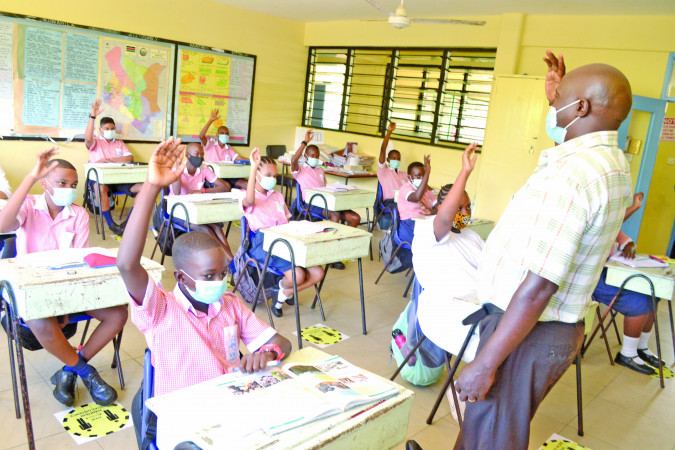Handwriting major predictor of academic success, say experts

In his autobiography, My Life is My Message, Mahatma Gandhi talks about the effect of bad or rather poor handwriting. He confesses to making assumptions that good handwriting was not a necessary part of education during his schooling years until he went to England.
“…I was ashamed of myself and repented of my neglect. I saw that bad handwriting should be regarded as a sign of an imperfect education. I tried later to improve mine, but it was too late. I could never repair the neglect of my youth. Let every young man and woman be warned by my example, and understand that good handwriting is a necessary part of education,” he wrote.
Nila Walela, an Early Childhood Development teacher for almost two decades recounts how during her school days and when she started teaching, a good handwriting served as a rite of passage for children. “Hunched over our desks, awkwardly clutching freshly sharpened pencils in our tiny hands, students copied the letters from the chalkboard onto a large sheet of lined excercise book. Beautiful handwriting became a source of pride because it showed a child had mastered the very adult skill of penmanship,” she smiles.
However, as time has gone by and as new technology finds its way into homes and classrooms, suddenly handwriting doesn’t seem as important anymore, Nila says.
She is worried that the paper tablets so many of us remember from childhood will fall by the wayside, replaced by tablets of the digital variety. With more demands than ever for the attention of students and teachers in the classroom, teaching elements, such as handwriting will start being disregarded.
From experience, she says poor handwriting often frustrates teachers and results in lower grades.
Nila also says there is a link between handwriting and brain development which shows that sequential hand movements used in handwriting activate the regions of the brain associated with thinking, short-term memory and language.
Stakeholders in education have attributed the lack of insistence on handwriting to poor growth and development of learners, despite various studies finding that handwriting is tied to academic achievement, especially in reading, writing, and Mathematics.
Kariobangi Primary School head teacher Pamella Mang’oli, concurs, saying especially in an age where resources in most public schools are scarce, the importance of good handwriting cannot be underlined as it gives students an edge over others. “When you look at our classes and mostly public schools, you will find that they are heavily populated and the teachers are supposed to attend to every learner and if a teacher writes well, the teacher will have an easy time going through the learner’s work,” she says.
“Handwriting is very important even during exams. We have compositions, and this will help both our teachers and our students to do better,” she adds.
The school was part of 35 primary schools with over 12,000 students and teachers taking part in a 26-day course dubbed My Words, My Story, My BIC Pen, an educational programme that teaches students how to confidently control a ballpoint pen and take pride in their handwriting abilities.
The first female head teacher for the school since its inception, Pamella says 100 learners in Grades Five and Grade Four from her school participated in the initiative, which she believes will raise performance in many schools, helping them compete with their private school counterparts, whose performances has mostly been impressive.
The creative writing programme saw participating students write a creative story to become more comfortable with the feel and movement of a ballpoint pen. Students then presented their stories to their teachers, parents, and the Teachers Service Commission (TSC) in Kenya.
Commenting on the occasion, Paloma Lengema, Marketing Manager at BIC said: “We are committed to improving learning conditions of more than 250 million children by 2025, and have placed the handwriting challenge high on our agenda due to the impact it has on a child’s development process. Since the launch of this programme, we have reached close to 25,000 Kenyan students, and are confident that this initiative will help us support and empower thousands more in the future.”
More than academic performance
Mukami Kariuki, a teacher who has been homeschooling for a couple of years now, says students with poor handwriting often miss getting better marks, especially when their work is skimmed, with the teachers also failing to understand the messages the learners wanted to pass.
She also adds that poor handwriting can lock some people out of some jobs, such as calligraphy, graphology, and teaching.
Teresia Muthoni Mungai, a parent of one of the students who took part in the handwriting course told Scholar during the course, she has seen improvement in her son’s performance in school. “From the moment this initiative began, my son was so excited to write his stories and work on his handwriting. He was proud of his achievement and that is a great feeling for any parent seeing their child improve not only in classwork, but build some self-esteem in their life,” she says.
Agnes Kangori a psychologist says handwriting can give away clues about personality traits based on the way a person writes. “People with small handwriting tend to be shy, studious, and meticulous, whereas outgoing people who love attention will have larger handwriting,” she says.











